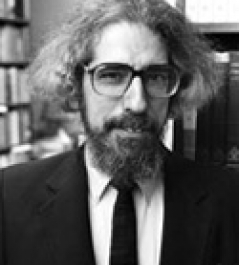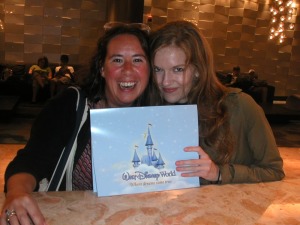Part I: As They Are, As They Should Be
The moment the seatbelt sign turned off, I began pressing the call button for the flight attendant. A statuesque blonde bounded over, her blue eyes rimmed in frosted lilac. She paused as she stared at the odd couple in the seats to which she’s been summoned: My dear friend Kristi—already vacation-clad in a white skirt, sandals, and floral tank top, headphones covering her ears, laughing out loud at the TV—and me—pale, dressed in skinny jeans and heels, clutching the armrests of the seat in terror.
“Can I help you ladies?”
“Do you have champagne?” I had tried to soothe my pre-flight panic by promising myself I could have a mimosa on the plane.
“No, I’m sorry, we don’t have champagne.”
“Oh…” Memories of watching plane crashes on TV flood into my memory. “What about vodka?”
“We have vodka.”
“Two.”
Kristi takes her headphones off. “Do you have white wine?”
The flight attendant gently squeezed my arm. “So, two vodkas, and wine. Coming up ladies.”
She disappeared into the food prep area. I pressed my back against the seat. My fear of flying developed when I was a teenager, and to this day, shows no signs of abating. No amount of safety statistics or emergency preparedness help. I tried to breathe deeply and tell myself that the alcohol would be here soon. Suddenly, Kristi slapped my arm.
“Oh my God! They have SAVED BY THE BELL on here!!!” She pointed to the TV and smiled. I tried to smile back.
Soon, our drinks would be here. And a few hours after that, we’d land in Orlando. The plane had to make it, I pleaded. Please make it.
This wasn’t just a vacation. This was a mission.
Mourning at Disney
Kristi and I met at Goddard College’s MFA in Creative Writing program. We immediately claimed each other as friends. Kristi is everything I wish I could be: Outspoken, fearless, unapologetically herself. She writes ghost stories, disquieting slices of ordinary life that break to reveal the supernatural. The true genius of her work is that every story starts off with a mundane problem: A relationship ending, money problems, the death of a family member.
The semester after I met Kristi, I lost my father to cancer. Six months later, her father died as well. The proximities of our losses bound us together. As neither of us considered ourselves particularly religious, we navigated the world of mourning untethered to any religious doctrine. The rituals and traditions of dying, of burying the dead, of grieving and recovery are steeped in religious images, symbols, and practices. Neither Kristi nor I could quite reconcile our own experiences of loss to this model. In the months after the loss, we’d call each other, wine in hand, and talk about our fathers: The good memories, the bad ones, the strange funerals, the way assurances of “he’s with God now” were well-meaning, but hit a hollow part of our beings.
 It was through these conversations that the Disney stories came out. Both of our fathers were hard-working men from humble beginnings who had worked their way up to the middle class (her father was an English professor, mine was a lawyer). Both men wanted their children to have the kinds of childhoods they never had: Whimsy and fantasy, lessons and vacations. Both men had taken their families to Disney World.
It was through these conversations that the Disney stories came out. Both of our fathers were hard-working men from humble beginnings who had worked their way up to the middle class (her father was an English professor, mine was a lawyer). Both men wanted their children to have the kinds of childhoods they never had: Whimsy and fantasy, lessons and vacations. Both men had taken their families to Disney World.
One night, Kristi called me as I was coming home from work. “So, I’m the one who’s going to have to deal with the estate,” she groaned between drags of her cigarette. “And that is going to take, like, years. It’s going to be a mess. So, I was thinking, I wanted to do something fun before this all starts, you know?”
“You deserve it,” I replied. My father had few assets when he died, but even so, executing his estate had been a nightmare. I could only imagine what Kristi was in for.
“Well, I was thinking, we should go to Disney World. In honor of our dads! It’ll be like a memorial, but also like a vacation.”
Over the next few months, we talked. We planned. We picked a hotel where we had both stayed with our fathers. We plotted which rides we had to go on. And we shared stories, memories of simple gestures: Our fathers getting us mouse ear hats, our fathers holding our hands tightly as we walked through the parks. Disney wasn’t just a place we had gone on vacation. It was a place we had gone where we felt normal. Kristi’s childhood had been marred by her mother’s illness, and she had essentially raised her siblings and managed the house while her mother’s health declined. My mother developed schizophrenia when I was young, and I spent much of my childhood homeless, dashing from hotel to hotel, or couch to couch, while my father tried to get custody. Those trips to Disney World were respites from our lives. They were places where we could actually act like children, where life had all the trappings of normalcy and magic and safety. It was an homage and a pilgrimage, a place to heal and a place to remember. And so, in 2008, we got on a plane to Orlando in an attempt to mourn the men whose absences were still palpable in the most authentic way we knew how.
Mourning while Atheist
 Religious historian Jonathan Z. Smith writes that “ritual is a relationship of difference between ‘nows’—the now of everyday life and the now of ritual place; the simultaneity, but not the coexistence, of ‘here’ and ‘there’…Ritual…is, necessarily, an affair of the relative…In ritual, the differences can be extreme, or they can be reduced to micro-distinctions—but they can never be overthrown.”[1] Smith’s assertion of simultaneity seems particularly salient with regards to atheists’ imaginaries of mourning: In the absence of an established practice of mourning, in the absence of a set ritual of goodbye, how is the necessary juxtaposition of the “here” and “there” made public, made palpable?
Religious historian Jonathan Z. Smith writes that “ritual is a relationship of difference between ‘nows’—the now of everyday life and the now of ritual place; the simultaneity, but not the coexistence, of ‘here’ and ‘there’…Ritual…is, necessarily, an affair of the relative…In ritual, the differences can be extreme, or they can be reduced to micro-distinctions—but they can never be overthrown.”[1] Smith’s assertion of simultaneity seems particularly salient with regards to atheists’ imaginaries of mourning: In the absence of an established practice of mourning, in the absence of a set ritual of goodbye, how is the necessary juxtaposition of the “here” and “there” made public, made palpable?
This question is salient to the 20% of Americans who identify as atheist, agnostic, humanist, “none,” or other in terms of religious affiliation. And while much has been made of interreligious dialogue, of pluralism, and of how these groups cultivate meaning in their lives, little has been said on the subject of how 1/5 of the population encounters grief and loss.
Mourning while atheist (or agnostic, or humanist) is complicated business. The rituals we’ve seen others turn to for comfort might not resonate at the same frequency for many of us. And while some might take comfort in participating in established religious rituals, there is also a palpable desire for something authentic, something that speaks to a belief system with no set liturgy, with no set doctrine.
In the absence of established ritual, where is meaning found? How is the simultaneity of “here” and “there” affirmed, both publicly and privately?
A Whole New World
Disney World isn’t a destination; it’s an alternate reality. Beginning at the airport, there’s a clear sense of otherness associated with Disney. While harried passengers crowd security lines and run to gates, the Disney-bound follow paths marked in cartoon footprints to busses that shuttle you to your destination hotels. Television screens alternate between playing classic cartoons and Disney guides. If you opt for the buses, you also receive special luggage tags. Slap these onto your suitcases, and a team of runners transports your bags to your hotel room. When you arrive, your suitcases are already there, one against each bed, seamlessly incorporated into the motif of Disney-themed artwork and towels twisted to look like the Mickey glyph.
From the moment you arrive, there’s a clear division between this world, and the other.
Maintaining a space that is authentic to both grief and memory, to vitality and mortality, is arduous, if not nearly impossible. But Kristi and I wanted authenticity. We wanted a place where we could reminisce without the realization that we were injecting death into daily life, where we could honor both the best memories of our childhoods, and the realities from which we escaped.
Here With Us
Our flight descended through a hurricane, which Kristi thought was exciting and I thought was how I was going to die. Because we had to circle above the hurricane clouds before we landed, we missed our bus. Not to worry, the flight crew assured us, another fleet of buses would be there in just under an hour. Kristi and I found the first outdoor smoking area we could. Heavy rain obscured everything outside. We smoked two cigarettes each, staring into a wall of silver and green.
 No longer suffering from nicotine withdrawal, we wandered around the airport. Kristi ducked into a Lush store, and I followed. We played with soaps and lotions and lip balms. We left smelling like hyacinth and covered in glitter.
No longer suffering from nicotine withdrawal, we wandered around the airport. Kristi ducked into a Lush store, and I followed. We played with soaps and lotions and lip balms. We left smelling like hyacinth and covered in glitter.
We made our way to the bus depot. Every employee smiled at us. At each station, we were asked just a few logistics questions: How long are you staying? Where are you from? Are you celebrating anything special on this trip?
“Yes!” Kristi squealed. “We’re celebrating our fathers! They took us here when we were young. They both died recently, so we’re here to honor their memory!”
The ticket agent put her hand over her heart. “Oh, bless you. That is beautiful. I’m sure they’re here with you, you know.”
“Oh, I know they are,” Kristi replied as we were ushered to our bus.
Once we were on the bus, she turned to me. “Don’t you feel them? Smiling? Wanting us to have a good time?”
I glanced at the TV screen above our seats. It flickered, then a cartoon with Chip and Dale came on. My father’s last days were spent in an ICU, tubes strung serpentine through his body. Most of my memories of him were of that room, the rhythmic sound of ventilators, the whir of dialysis, the overpowering smell of bleach. Watching two cartoon chipmunks collect acorns on the screen seemed a world away.
“I do,” I said, as we sunk into our seats and the bus left for the resort.
Performing the Way Things Ought to Be
 Johnathan Z. Smith says that ritual “is a means of performing the way things ought to be in conscious tension with the way things are.”[2]
Johnathan Z. Smith says that ritual “is a means of performing the way things ought to be in conscious tension with the way things are.”[2]
It is this definition of ritual that, I suspect, we strive for when we mourn. We hold our own continued presences to an unfathomable absence until it sings, or until we can’t stand it. And somewhere in this process, we discover that the underlying mechanics by which we let go are, perhaps, not so different after all.
[1] Jonathan Z. Smith, To Take Place: Toward Theory in Ritual (Chicago: University of Chicago Press, 1987) 110.
[2] Ibid, 109.
Click Here for Part 2
Meghan Guidry (Harvard University)Meghan is a Masters of Divinity candidate at Harvard Divinity School, where she studies bioethics, humanist philosophy, end-of-life care, and health policy. Her research focuses on the disconnection between ethics and technologies, assisted suicide, and other cheery subjects. Her interests include creative writing, swimming, language philosophy, medical sociology, and coffee. You can check out her books at Empty City Press, find her on Facebook, and follow her on Twitter @monocrescent.
Amazing piece. I had a similar experience when mourning over my uncle last summer. Friends and Family don’t understand how tough it is to mourn, especially as an agnostic since there is no comfort in going to mass.
LikeLiked by 1 person
Thank you so much for your thoughtful comment, L.C.S.! I’m so sorry to hear of your loss, and I’m glad the piece resonated with you. It’s definitely challenging to mourn and to create meaningful rituals as an agnostic. I hope you’ve been able to find modes of grieving that are authentic and comforting for you. If you’re interested, you can read the second installment of the series here: https://appliedsentience.com/2015/06/22/a-place-on-earth-ritual-grief-mourning-as-an-atheist-part-2/ and the third part should be posted in just a few days.
LikeLiked by 1 person
Excellent piece. It’s good that you and Kristi found a way to celebrate your fathers’ lives in a unique way.If any readers are interested, here is another one about dealing with mortality as an Ex- Mormon.
LikeLiked by 1 person
Thanks so much for your comment, and for your kind words, Dustypunx. If you’re interested, the second installment of the series is here: https://appliedsentience.com/2015/06/22/a-place-on-earth-ritual-grief-mourning-as-an-atheist-part-2/, and the third should be up later this week.
And thank you for sharing your own story. I think your points about time and fulfillment are so vital and so important! It’s making me revisit my own bucket list more critically 🙂
LikeLiked by 1 person
I read the second installment right after I commented. Good work.
LikeLiked by 1 person
This is a beautiful post. What better way to remember your Dad’s than by participating together in something so associated to them. I lost my Dad at 23 I wasn’t an atheist as such but I did turn to addiction as at the time I went overseas alone and had no one to talk to about my Dad. It took me years to begin to mourn the loss. That you could both go together and share this was such a blessing. Thanks for sharing your experiences.
LikeLiked by 1 person
Thank you so much for your comment, and for sharing your story, Emerging! I was also 23 when I lost my dad. While there’s no good age at which to lose a parent, there’s something so difficult about losing one on that cusp of adulthood when you need guidance and support as you begin to make your place in the world. I’m so sorry to hear that your mourning process has been so challenging, and I hope that you’ve found ways to grieve that are authentic to both you and your father’s memory, and that you’re now finding ways to live that honor both of you with that same compassion 🙂
LikeLike
Thank you so much Meghan for such a compassionate reply….it has been a difficult journey for me and I appreciate your insight shared here. ❤
LikeLiked by 1 person
Well said
LikeLiked by 1 person
Thank you, DR! I’m glad this resonated with you, and I hope you like the rest of the series!
LikeLike
THUMBS UP!
LikeLiked by 1 person
Thank you, Arul! I’m glad you liked the piece, and I hope you’ll enjoy the rest of the series!
LikeLiked by 1 person
Ur Welcome.. Keep creative 🙂
LikeLiked by 1 person
Pingback: A Place on Earth: Ritual, Grief, & Mourning as an Atheist, Part 3 | Applied Sentience·
Pingback: A Place on Earth: Ritual, Grief, & Mourning as an Atheist, Part IV | Applied Sentience·
I just stumbled across this piece in my Reader and I must say I found it to be very beautiful and thought-provoking.
If I may, I’d like to submit that one of the most daunting aspects of the mourning process is the possibility of enduring and making sense of it ALONE. I think that is where “organized” religious rituals hold the advantage over atheistic/agnostic/humanistic mourning. They offer COMMUNITY. It’s one of the greatest mysteries that despite our differences and all the horrible crimes we commit against each other as humans, we all ultimately need each other.
I think very often we as humans tend to get so caught up in what we can see that we totally forgot the main point they are meant to highlight and which proceeds from the unseen. To say it in the words of Christ, we’re too hung up on “the letter which kills” and cannot see “the spirit which gives life.” At the end of it all, rituals are really meant to provide mourners with community which is the only known therapy against loss. For example, we think we just go to funerals because it’s the traditional thing to do and lose sight of the fact that just by our being there we are helping the bereaved to heal because we are silently affirming to them that THEY ARE NOT ALONE!
I thank you very much for such a stirring piece. I’m particularly you found this therapeutic togetherness I mentioned through your friend Kris. That, I believe, is the heart and point of the mourning process: not so much DOING, but BEING. It’s just that often we can only show and prove our being by our doing. Lip service versus action — faith without works, if you will.
God bless you, Meghan. Your story was inspirational and gave me new food for thought. 🙂
LikeLike
Pingback: A Place on Earth: Ritual, Grief, & Mourning as an Atheist, Part 5 | Applied Sentience·
Pingback: Navigating: A Tarot Talk With Meghan Guidry | MiCHELLE EMBREE·